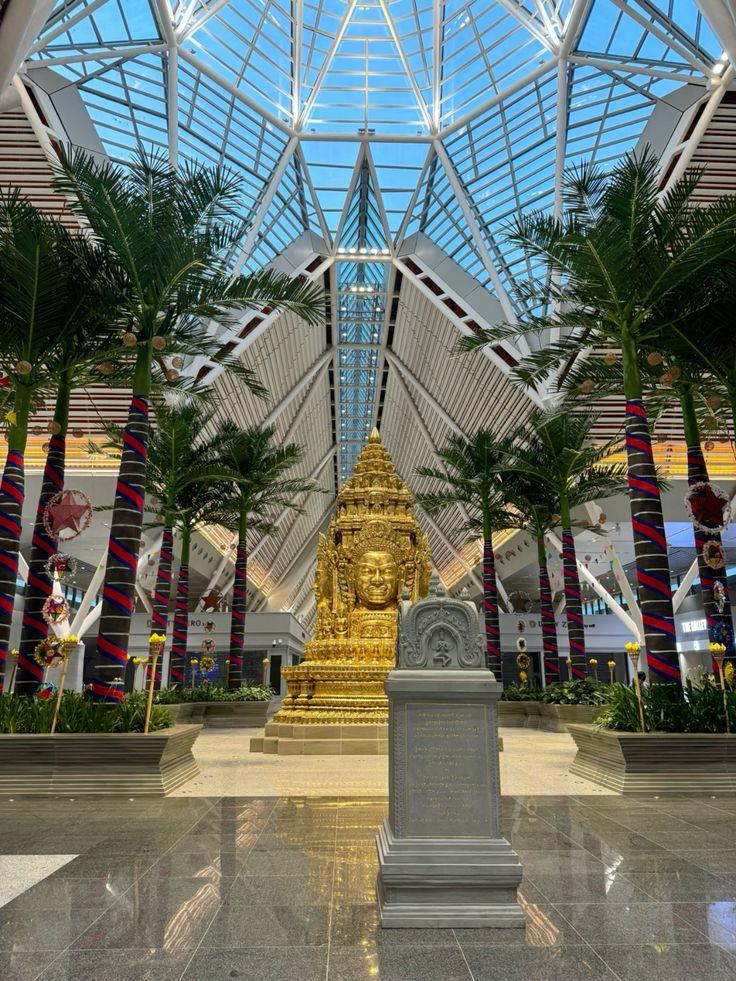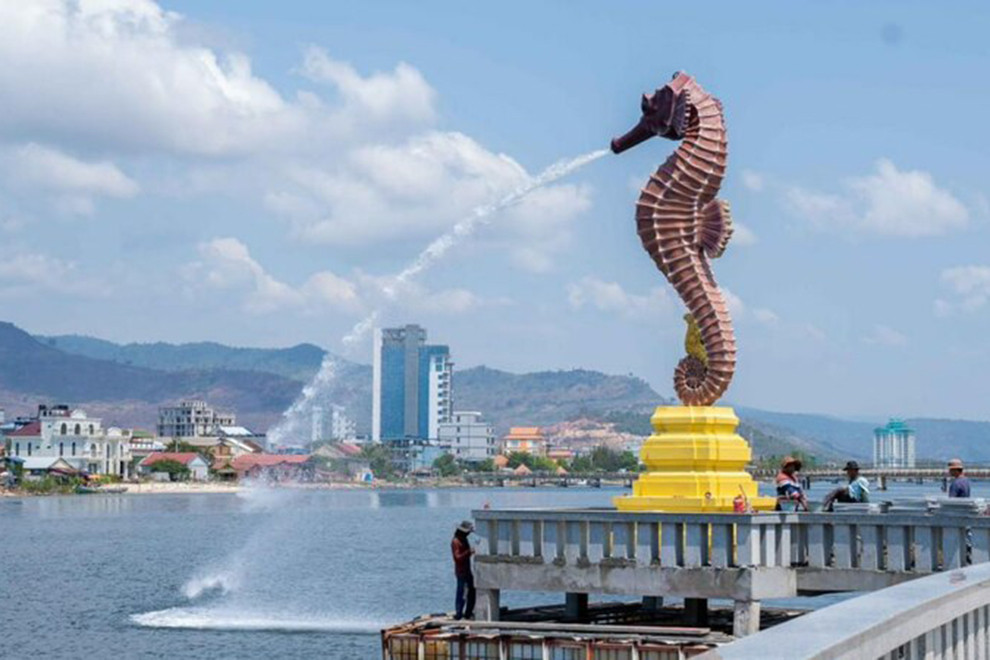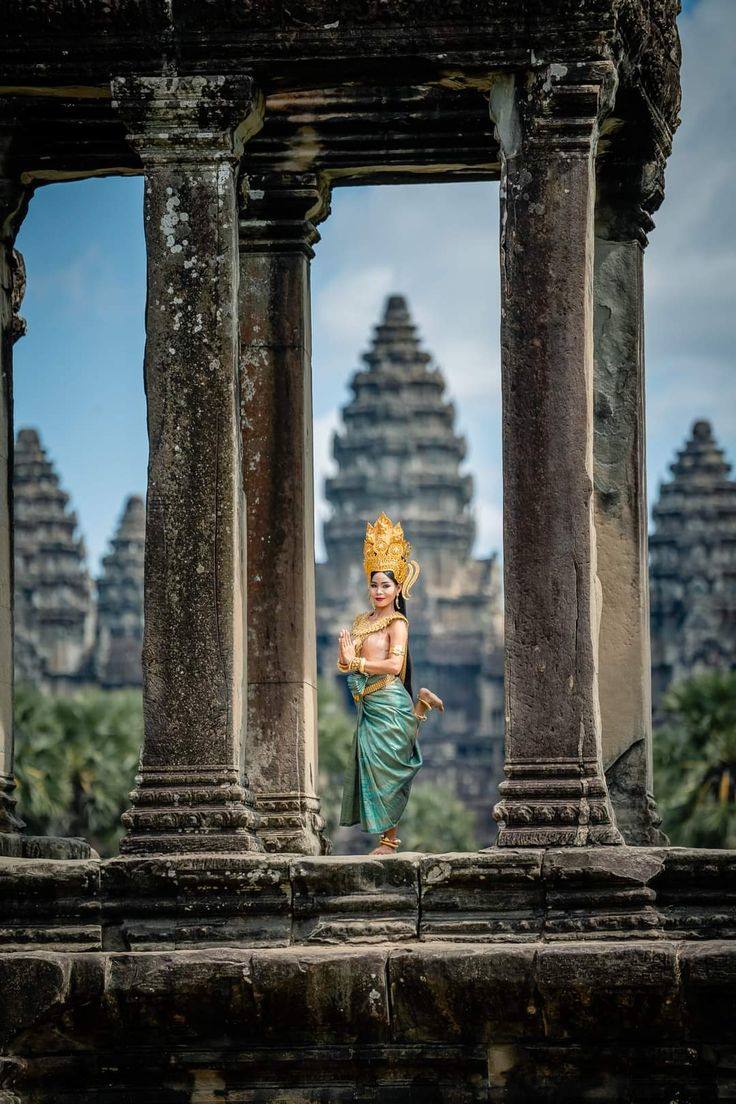The Small Circuit (or Petit Circuit, Little Circuit, small tour) is a tour route for easily navigating the key temples in the central area of Angkor Archaeological Park including Angkor Wat. This tour is perfect for one-day Angkor Pass holders as it covers the must-see temples of Angkor. It’s also a starting point for multi-day Angkor Pass holders who can, on a later day, continue with the Grand Circuit. The grand circuit goes on to explore temples just outside the central area.
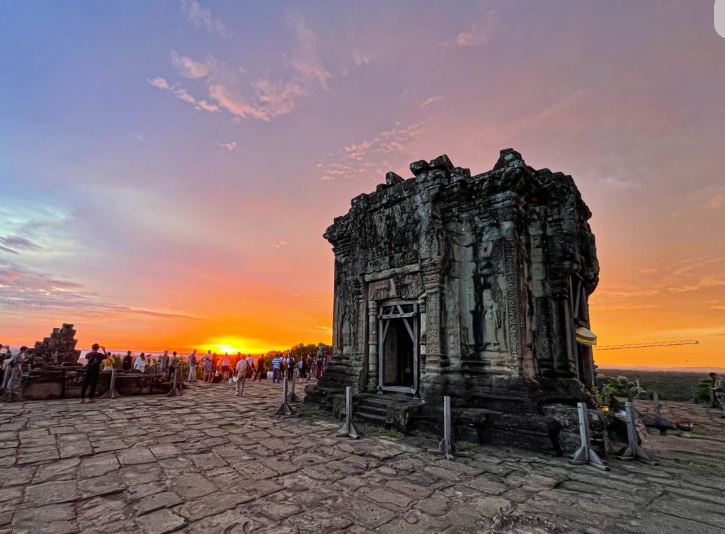
Phnom Bakheng Temple sits atop the 65m rise that carries the same name, Phnom Bakheng and looks across the plains below with Angkor Thom to its north and Angkor Wat to its southeast, both of which it predates by more than two centuries. It’s a monumental construction that followed the beliefs of the time

Bayon Temple is a richly decorated ancient Khmer temple located at the centre of Angkor Thom in Angkor Archaeological Park of Siem Reap, Cambodia. It is one of the must-see temples when visiting the area being famous for its array of towers with smiling faces and “baroque” architecture in a Khmer context.

Tep Pranam (Khmer: ប្រាសាទទេពប្រណម្យ), located inside Angkor Thom, is a “Buddhist terrace” featuring seated lions and naga balustrades with a giant seated Buddha. It is located just north of the Terrace of the Leper King. The terrace is typical of Buddhist Terrace constructions being low height, cruciform shape, and facing east.

Terrace of the Leper King, also known as Preah Lean Sdach Kumlung, is located in Angkor Thom, immediately north of the Terrace of the Elephants and just south of Tep Pranam. It’s a unique construction in the ancient Khmer context featuring an amazing array of carvings of personages, devas,

Kor Sak Temple, or Preah Pithu T, is located in Angkor Thom and is one of the five temples that make up what is known as Preah Pithu Group which are located to the northeast of the ancient Royal Palace. The ancient temple was originally dedicated to Vishnu,
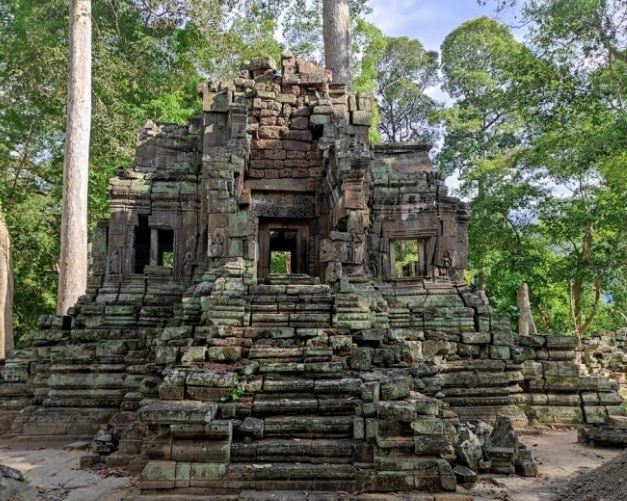
Preah Pithu U, or Chorm Temple, is a small sandstone temple, surrounded by a wall and sharing an “island” created by an outer moat with Preah Pithu T (Kor Sak Temple). The outer wall, with entrances at each cardinal point, leads to the small cruciform shaped temple that rises up on a stepped base.

Baphuon Temple, located in Angkor Thom to the northwest of the Bayon temple, is another of the famed mountain temples built by the ancient Khmer. The temple is known for its grand entrance, its scale, and the impressive reliefs especially those on the second enclosure of the top level. It dates to the mid-11th century

Preah Palilay (Khmer: ប្រាសាទព្រះបាលិលេយ្យ) is a small but fascinating ancient temple located in Angkor Thom, only a short walk to the north-west of Terrace of Leper King and Tep Pranam. The site’s contemporary name, Preah Palilay, has the meaning Sacred Forest of Palilay whilst the original site name is unknown.

Preah Pithu X (Ta Tuot Temple) Differing from others in the Preah Pithu group, Ta Tuot is a Buddhist Temple converted from an earlier Hindu temple sometime around the 14th century. It is a sandstone temple atop a large and tall platform atop of which is a stepped pyramid-style base with four stairways leading to the central shrine

Preah Pithu V, or Duan Mea Temple, is an early 12th Century Hindu temple located in Angkor Thom. It is part of what is known as the Preah Pithu Group which references five temples that are clustered together, although, not necessarily constructed at the same time. The site does not feature a foundation inscription

Preah Pithu Y, or Kandork Yeak Temple, is a 12th-century sandstone temple located in Angkor Thom. It was originally dedicated to Vishnu. It is one of the five temples in the Preah Pithu Group and differs greatly from the other four in many ways.

Spean Thmor, or Spean Thma (Khmer: ស្ពានថ្ម) in Angkor Archeological Park is an ancient sandstone bridge located west of Ta Keo. It was built on the former path of the Siem Reap River between Angkor Thom and the Eastern Baray and it was rebuilt/constructed sometime between the 13-17th century, officially recorded as the 17th
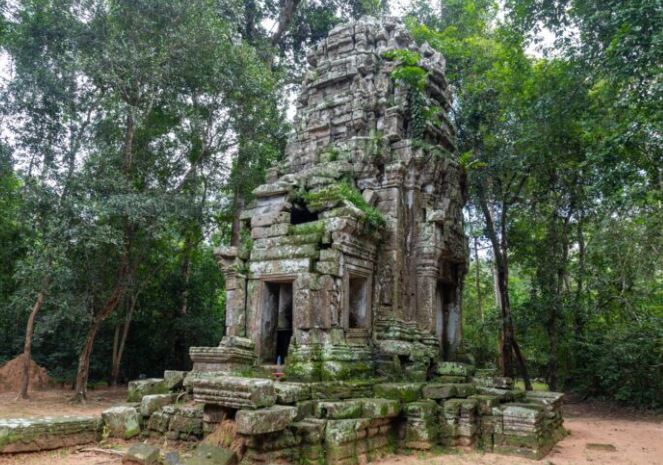
Leak Neang – Hospital Chapel Located west of Ta Keo temple, it is one of the many ‘hospital chapels’ built during the reign of King Jayavarman VII. The site layout is typical of that construction type featuring a single sandstone temple with a false story superstructure, a hall/mandapa extending east, and then, enclosed by an outer wall with entrance gopura.

Banteay Kdei Temple is a charming ancient temple located opposite the grand basin of Srah Srang to which it was once connected. Built in the mid-12th to early 13th centuries during the reign of King Jayavarman VII, it is in the Bayon architectural style, with a flat layout plan similar to the nearby Ta Prohm
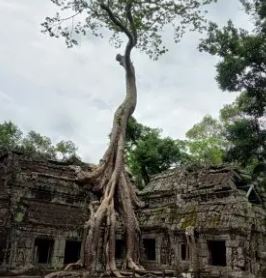
Ta Prohm temple is located 3 km northeast of Angkor Wat, and around 12 km northeast of Siem Reap city. It is an ancient Buddhist monastic complex that was constructed in 1186 AD under the reign of the Khmer King, Jayavarman VII, and is popularly known in modern culture as the “Tomb Raider Temple”.

Ta Keo is another grand example of the ancient Khmer concept of the “temple mountain” featuring a monumental stepped-pyramid base topped with five massive towers. Located east of Angkor Thom, north of Angkor Wat, and on the west side of the East Baray, it is dated to the 11th century.

Thommanon Temple is a small but very ornate temple featuring beautiful bas-relief pediments located east of the Victory Gate of Angkor Thom and north of Chau Say Tevoda. Although no foundation inscription was found, it is dated by art style to the late 11th or early 12th century
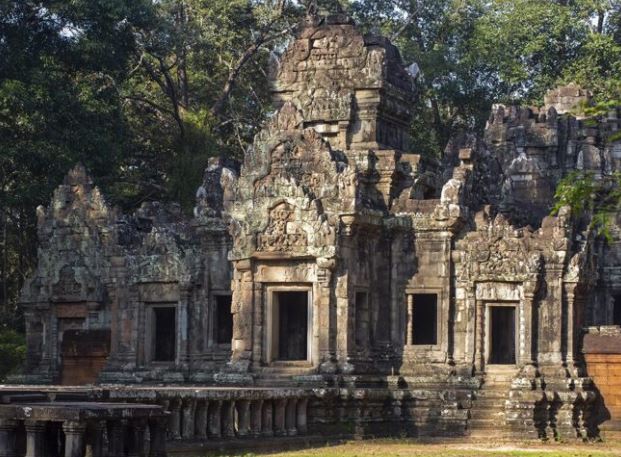
Chau Say Tevoda (Khmer: ប្រាសាទចៅសាយទេវតា) is a temple at Angkor Archeological Park, Siem Reap Cambodia. It is located just east of Angkor Thom before the Victory Gate and directly opposite Thommanon Temple. Chau Say Tevoda is often overlooked on a tour of the temples which is a shame,

Srah Srang (Khmer: ស្រះស្រង់) is a reservoir at Angkor, Cambodia, located south of the East Baray and east of Banteay Kdei. Srah Srang measures 700 by 350 m, lined by laterite blocks capped with sandstone featuring a landing stage/terrace on its western side and an island temple at its centre

Kravan (Khmer: ប្រាសាទក្រវាន់) is a 10th-century temple constructed in the era of Harshavarman I (reign circa 910-922 AD) consisting of five brick towers. The temple was dedicated to Vishnu in 921 AD, according to the inscription. It’s a site that is often skipped,
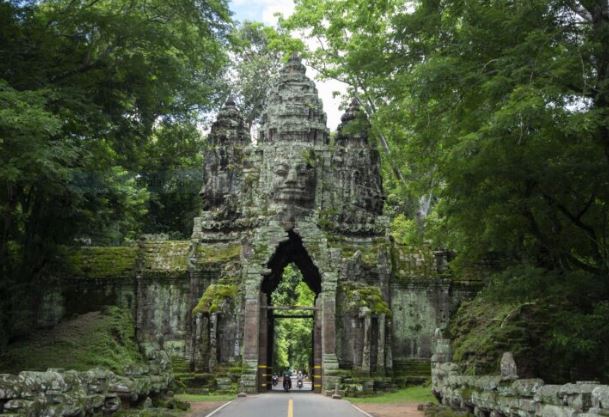
The south gate of Angkor Thom is a very famous spot within Angkor Archeological Park and one that shouldn’t be missed. Standing on the causeway, and admiring the sheer scale, as you find yourself drifting back in time to imagine

Terrace of the Elephants (Khmer: ព្រះលានជល់ដំរី) is one of the many iconic constructions of the Khmer Empire and a key highlight within the walled city of Angkor Thom. The long terrace, also known in some records as the Terrace of Honor,

Phimeanakas (Khmer: ប្រាសាទភិមានអាកាស) is another of the grand pyramid-based state-temples that was the common archetype of the 8-11th century. Located inside the ancient Royal Palace of Angkor Thom, it is a grand three-tiered pyramid with a rectangular base whose corners are mounted with stone elephants and staircases
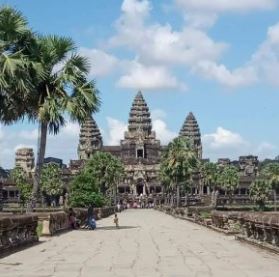
Angkor Wat, or Angkor Wat Temple, is one of the largest religious monuments in the world, featuring a spectacular moat that encloses temple grounds with grand entrances and causeways leading to the massive multi-level, multi-towered ornate sandstone temple. It’s the main attraction of the massive Angkor Archaeological Park of Siem Reap
All up, timewise, you can do the small circuit quite quickly in half a day, or alternatively, quite easily take the whole day exploring more detail and even many of the smaller temple sites. It really depends on your level of interest, energy, and of course the weather.
Summary
Small Circuit Route Length: 30km from Siem Reap and return.
Small Circuit On-Road Time in Car/Tuk Tuk: approx 1hr 20min
Small Circuit Sight-Seeing Time: Min. 3 hrs up to max hours between 5 am and 7 pm (most temple sites
are open from 7.30-5.30 excepting the sunrise and sunset spots, Angkor Wat opening at 5.00 am and Phnom Bakheng opening at 5.00 am and closing at 7.00pm)

